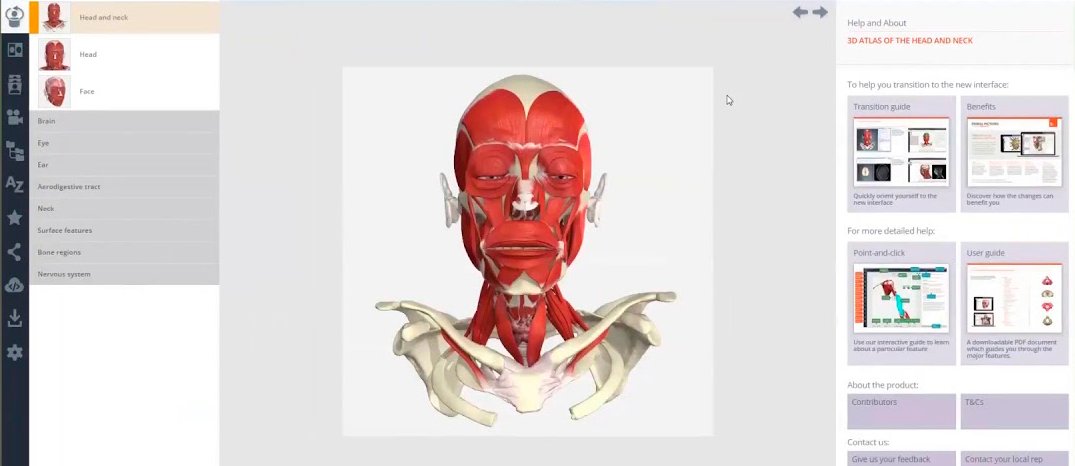How are learning resources chosen? The case of Primal Pictures
Subject: Health Sciences | Psychology and Educational Sciences
Every time a new resource is uploaded, it marks the culmination of collaborative work between teaching staff and the Library, within the UOC's educational model.
For the last year, the tool Primal Pictures has been one of the learning resources available for students taking Health Sciences and Psychology courses. This tool is an atlas of the human body for learning the basic concepts of anatomy and physiology, with 360º images.
In this article, published on the product supplier's website, Raquel Viejo, professor of Neuropsychology and Neuroscience, and Àgueda Mercadal, reference librarian for the Faculty of Health Sciences, explained how they chose Primal Pictures and what aspects they took into account.
The UOC's librarian team sent Primal Pictures' proposal to the teachers, who finally decided to activate the platform after a test period and reviewing the feedback.
The rest of the university community can access Primal Pictures through the UOC Library.
Learning anatomy in a digital environment
As professor Raquel Viejo explained, Primal Pictures allows students to learn anatomical structures, functions and relationships without needing a model or a physical laboratory.
It is a dynamic visual resource that can be used to explore anatomical structures, click on them to see their name and features, and add or remove layers of tissue. The level of detail and the visual possibilities offered by the platform were without a doubt one of the key factors that led to the decision to include the resource in the classroom
Another reason for choosing this resource was the "ease with which Primal Pictures was integrated in the Virtual Campus and how it solved problems for sharing content between teachers and students," explained Àgueda Mercadal. This appraisal was echoed by Professor Viejo: using the tool, personalized displays can be prepared for the students, who can then directly access the content they need to learn.
Other strengths of Primal Pictures
Another decisive feature were the specialized content collections offered by the platform, such as the pathology of spoken language, which is useful for students and faculty alike in the Bachelor's Degree in Speech Therapy.
Another favourably rated feature was the possibility to translate all the content automatically into Spanish for the supporting text.
The UOC's learning resources
Resources such as Primal Pictures must undergo an assessment and procurement process before they can be put in the classroom for use by students in their activities.
The courses' Resources section also includes e-books, articles, films and software that require negotiating copyrights or purchasing licences before they can be used.
There are also other materials that are developed directly by the University specifically for each course and are available in different formats, such as videos, information graphics, websites or modules.
In this video, the people who take part in choosing and creating learning resources tell us a little bit about what they do. Before the start of a new academic year, the UOC's teaching staff ask the University to prepare new learning resources. If this is not feasible, they ask for input from their faculties' reference librarians about choosing other resources that are already available on the publishing or audiovisual market.
The eLearn Center supports faculty in the courses' and programmes' instructional design and works from different disciplines to offer students the best learning experience.
This is the process followed in designing or selecting your courses' learning resources.




